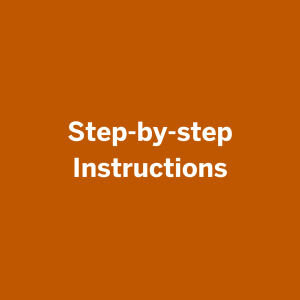19 AI-Assisted Scientific Literature Reviews (Analytical Chemistry)
|
|
Description of resource(s):
This resource includes materials for designing a student activity aimed at enhancing their exposure to and familiarity with AI in scientific literature reviews. It also provides students with an opportunity to compare and contrast AI with traditional methods for literature search/review and express their experiences using AI through a series of survey questions.
Links to Resources:
Why I implemented this:
In my upper-level analytical chemistry lab, one of the major learning objectives is familiarizing students with experimental design. As part of achieving this, they are tasked to conceive an independent idea to develop as an experimental project during their final semester. The first step in the process of experimental development is finding and reviewing the relevant scientific literature. Usually, this process is done through a search using the relevant databases (Web of science, Google Scholar, SciFinder etc), then manually reading and selecting the articles best suited for their project design. This process is time-consuming and requires unique expertise
In light of the AI era, the focus of the activity discussed in this resource is to provide students with the opportunity to explore the use of AI to compare and contrast it with their current process for finding literature.
This assignment unfolds in two phases. In the first phase, students are guided through the conventional approach, which includes utilizing library tutorials, locating references for their unique concepts, crafting concise summaries, and completing technical questionnaires I have created to help students read through papers that describe common techniques in analytical chemistry.
Subsequently, in the second phase, students engage with an AI tool provided to replicate the same tasks. This segment was offered as an extra credit opportunity. Students’ thoughts and opinions about the two methods were collected through a built-in Canvas survey.
My intention is to foster an environment of inquiry and adaptability, where students not only gain exposure to this particular AI tool but also cultivate a curiosity to explore other AI tools in a similar fashion. Given the rapid evolution of this field, this exposure serves as a vital educational experience for students venturing into the scientific research community.
My main takeaways:
- Scispace is better than other tools I examined (OpenRead, Jenni.ai), but still needs vast improvement to replace the conventional method of scientific literature review process.
- For example, the Co-pilot feature on Scispace is effective in extracting specific information which speeds up evaluating the relevance of the article. On the other hand, in terms of summarizing, it present very general information and was missing the holistic view of the specific content presented in the article
- It has the utility of extracting technical information from publications effectively
- This tool can be used as your own research library to store all relevant research papers in one place and access information using the AI tool.
- Can be used as a citation manager, but needs improvements: create citations adhering to the certain citation style guidelines.
- It has a wide accessibility to research articles with the quick access feature, which allows the user to view the full article if needed. This way, SciSpcae can be used to shortlist most relevant articles of a given topic and conveniently access the full article for further review.
- Reading through some students’ responses, I am pleasantly surprised by their perspective on the adaptation of these new tools. Many of them expressed concerns about the negative applications of such tools and showed awareness of the importance of fact-checking.
What else should I consider?
Timing: Implementing this activity during mid-semester would be ideal, allowing students ample time to explore both methods thoroughly. To encourage participation, the submission deadline for the extra credit component has been extended until the end of the semester.
Context: This activity is best suited for upper-level students in a more open-ended learning setting.
Adaptations: While my activity is tailored for a laboratory environment, in a lecture setting, you could introduce a modified version as a group activity. Instead of a survey, consider having students report their findings to the class or use a sticky-note post-board.
Below are a few examples of other settings/discipline that this activity can be adapted:
- to encourage use of AI for background research for a class paper (ex:sociology, history)
- to explore a use of AI to review a selected paper (writing class)
- to encourage AI assisted revisions to a mathematical operation or a computer coding (Computer science, Statistics)
Potential Pitfalls: Be mindful of pricing limitations; the free version of the AI tool has restricted use (limited to 10 co-pilot questions per day). When designing your activity, consider these constraints.
Want to learn more? The customer support for this particular AI tool is effective. You can schedule demos or consultations with them if you’re considering adopting the tool. Additionally, they offer free full access during the trial period (7 days), allowing you to fully experience its capabilities.



